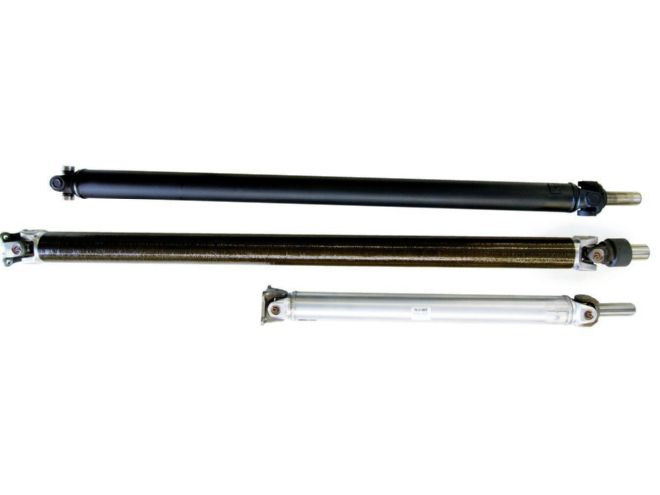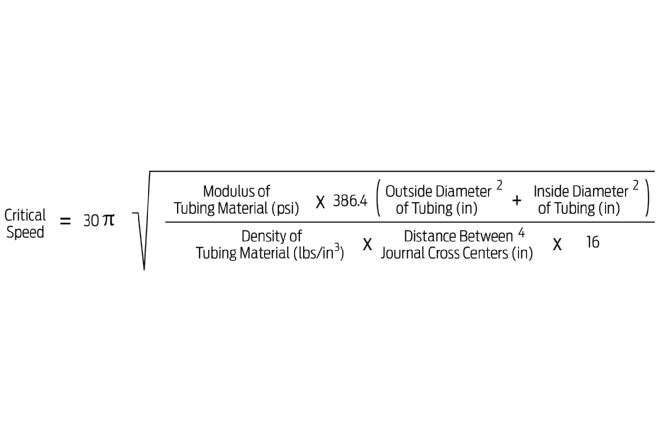
Generally speaking, the driveshaft’s U-joint yokes are most susceptible to snapping when subject to high torque and good traction during a dragstrip launch, while the driveshaft tube is most vulnerable at high speeds. So a lighter-weight car with street tires is less apt to snap a U-joint or yoke than a heavy car with slicks. GM, Ford, and Chrysler have all used their own U-joints designs, which roughly compare in size and strength to 1310 or 1330 series Spicer U-joints. Most racers upgrade to the bigger 1350 U-joints for more strength. According to Spicer, the 1310 joint is rated at 400 lb-ft of continuous torque (down the track) and 800 lb-ft of short-term torque (launch at the line). The 1330 has the same size caps as the 1310, but the U-joint cross is the same size as a 1350. The 1350 is rated at 1,240 lb-ft of continuous torque and 1,680 lb-ft of short-term torque.
A transmission slip yoke can also be a weak link. They can be the same diameter on the outside, but on the inside, the number of splines and their depth can be different. If your replacement’s splines don’t go all the way to the end, it could twist an output shaft. Your car’s transmission slip yoke should have ¾ to 1 inch of available travel to pull in and out of the transmission to compensate for suspension travel. Too much travel and you’ll pull the yoke out too far. It needs at least 3 inches of spline engagement inside the transmission.
Your Driveshaft’s Critical Speed
Modulus of elasticity is the stiffness of a particular material. Generally speaking, mild steel has a rating of 30 x 106 psi, Metal Matrix Composite is 14.1 x 106, and 6061 aluminum is 10 x 106. For the sake of the below formula, the density of steel is 0.2830 lb-in3 and the density of aluminum is 0.0980 lb-in3. Carbon fiber’s MOE and density can’t be easily determined without knowing the exact material and technique used in construction.

You can determine your driveshaft’s critical speed using the above formula. If your max rpm is lower than the critical speed of your driveshaft, then you’re safe: (Car’s Top Speed x 336 x Final Drive Gear Ratio) / Tire Height in Inches = Highest RPM Rating for Your Driveshaft.